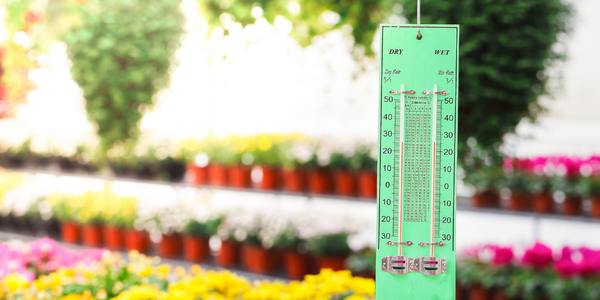Customer Company Size
SME
Region
- America
Country
- United States
Product
- mesur.io
- Qlik Sense
Tech Stack
- Data Analytics
- Data Visualization
- Machine Learning
Implementation Scale
- Enterprise-wide Deployment
Impact Metrics
- Productivity Improvements
- Customer Satisfaction
Technology Category
- Analytics & Modeling - Real Time Analytics
- Analytics & Modeling - Data-as-a-Service
Applicable Industries
- Agriculture
Applicable Functions
- Product Research & Development
- Quality Assurance
Use Cases
- Predictive Maintenance
- Real-Time Location System (RTLS)
- Farm Monitoring & Precision Farming
Services
- Data Science Services
- Software Design & Engineering Services
About The Customer
The customer in this case study is mesur.io, a company that was founded to solve the problem of collecting, analyzing, and presenting meaningful data for small and mid-sized farms. The founder of mesur.io had experience in marine science and had worked on a project tracking animals and environmental conditions. He realized that there was a need for a solution that could provide actionable insights from the data collected from the soil. The founder had also worked on analytics startups and had solved hard math and architecture problems for large scale enterprises. When he moved closer to his aging father-in-law and bought a farm, he realized that the data problem was still very much alive. He wanted to monitor the soil on his new land, but the agricultural monitoring equipment available in the market did not provide actionable insights for smaller farms.
The Challenge
The challenge faced by mesur.io was to create a platform that could collect, analyze, and present meaningful data for small and mid-sized farms. The agricultural monitoring equipment available in the market was primarily designed for large-scale agriculture and did not provide actionable insights for smaller farms. The founder of mesur.io wanted to create a solution that was affordable and easy to use for the majority of farms worldwide. The solution needed to provide real-time data on soil conditions and offer recommendations based on historical trends. The challenge was to create a user interface that could present the data in a meaningful way and provide real insights rather than just displaying graphs.
The Solution
The solution was to use Qlik Sense, a data analytics and visualization platform. Qlik Sense was chosen because it was built like a regular SDK for working with data and it made it easy for users to see the connections within their data. The platform was designed with a user-first approach, focusing on the needs of the users who were primarily golf course superintendents and small farm operators. The platform was designed to automatically handle all the key data points and provide a visualization dashboard that provided real insights. The use of Qlik Sense shortened the development time and time to market by at least six months. The platform was also designed to handle real-time data in conjunction with historical data and link all the data points together. This allowed users to filter down to the selected area and get actionable insights.
Operational Impact
Quantitative Benefit

Case Study missing?
Start adding your own!
Register with your work email and create a new case study profile for your business.
Related Case Studies.

Case Study
Intelligent Farming with ThingWorx Analytics
Z Farms was facing three challenges: costly irrigation systems with water as a limited resource, narrow optimal ranges of soil moisture for growth with difficult maintenance and farm operators could not simply turn on irrigation systems like a faucet.

Case Study
Greenhouse Intelligent Monitoring and Control Solution
Farming Orchids is the most successful form of precision farming in Taiwan, and also the most exported flower. Orchids need a specific temperature and humidity conditions to grow and bloom, and its flowering time may not be in line with market demands, so the price collapses when there is overproduction. Therefore, some farmers began to import automated greenhouse control systems for breeding and forcing, which not only improves quality, but also effectively controls the production period and yield to ensure revenue. In 2012, an orchid farmer built a Forcing Greenhouse of about 200 pings (approximately 661 Square Meters) in Tainan, Taiwan. The system integrator adopted Advantech’s APAX-5000 series programmable automation controllers to build the control platform, coupled with Advantech WebAccess HMI/SCADA software, to achieve cloud monitoring. The staff of the orchid field can monitor important data anytime via smart phone, iPad, and other handheld devices, and control the growth and flowering conditions. System requirements: In the past, most environmental control systems of orchid greenhouses in Taiwan used PLCs (Programmable Logic Controller) with poorscalability and control, and could not be connected to the Internet formonitoring from the cloud. For advanced database analysis and networking capability, the PC platform must be adopted. Therefore, PAC Systems (Programmable Automation Controller) with both PLC programming capabilities andPC functions is a better choice.The environmental control of the Orchid greenhouse switches on and off devices like fan, shade net, cooling/heat pump, liquid flow control, water-cooling wall etc. It is controlled by a control panel of electric controllers, and is driven by a motor, to adjust the greenhouse temperature, humidity, and other environmental conditions to the set parameters.

Case Study
Enabling Internet of Things Innovation in Agriculture
DigiBale, wanted to apply technology know-how and IP from implementations successfully to more agriculture sectors including cotton, forestry, sugarcane and cattle. However, farmers and growers still have worries about the connected technology.

Case Study
Precision beekeeping with wireless temperature monitoring
Honeybees are insects of large economic value and provide a vital service to agriculture by pollinating a variety of crops. In addition, bees provide us with valuable products such as honey, beeswax, propolis, bee venom, etc. Monitoring of honeybee colony health, population, productivity, and environmental conditions affecting the colony health have always been exceedingly difficult tasks in apiculture. Research has shown that even small deviations (by more than 2°C) from the optimal temperatures have a significant influence on the development of the brood and the health of adult bees.





